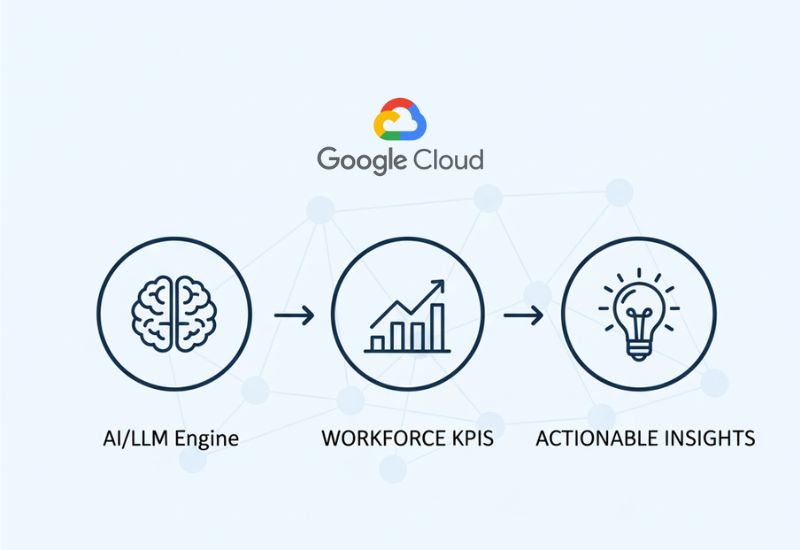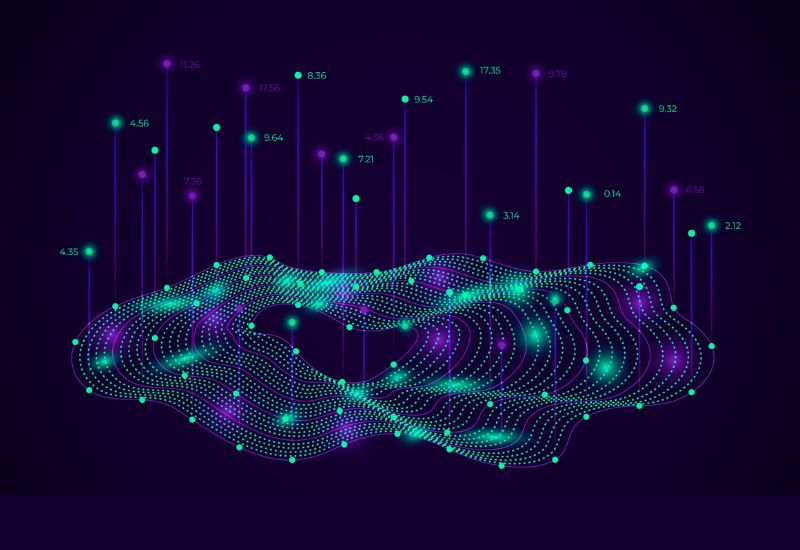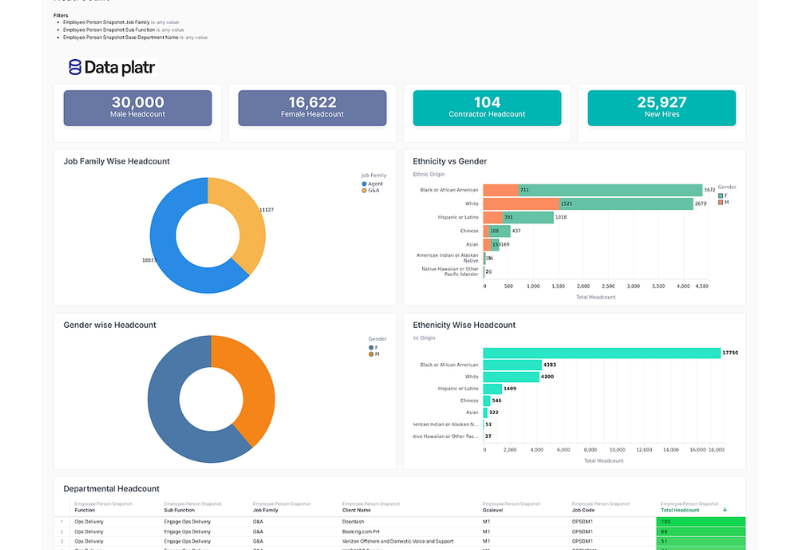What is a Data Governance Framework?
A data governance framework is a structured approach that defines how an organization manages its data assets. It outlines the policies, roles, responsibilities, processes, and standards needed to ensure data is accurate, consistent, secure, and used responsibly across the organization.
At its core, a data governance framework provides the foundation for effective data management and usage. It aligns data handling practices with business goals, regulatory requirements, and operational needs. By doing so, organizations can establish trust in their data and drive more informed decision-making.
Unlike a general governance framework, which may apply to various operational areas, a data governance framework is specific to the handling and stewardship of data. It supports key areas such as data quality, data ownership, data privacy, and compliance. Organizations often refer to data governance framework best practices to establish clear accountability and scalable controls.
Data Management and Data Governance Framework
A data governance framework provides the structure for defining policies, roles, and responsibilities that ensure data is managed ethically, securely, and in alignment with business goals. Data governance focuses on setting the rules, who is accountable for data, how decisions are made, and what standards must be followed. On the other hand, data management is responsible for implementing those rules through day-to-day processes like data integration, storage, quality control, and access.
An integrated data management and governance framework ensures that both strategic oversight and operational execution work together. Governance defines what needs to happen and why, while management determines how it happens. When aligned, this framework improves data quality, enforces compliance, and supports trusted data use across departments. It also strengthens the foundation for scalable analytics and business intelligence by ensuring that data is reliable, consistent, and properly governed.
Why Do I Need a Data Governance Framework?
A data governance framework is essential for any organization that relies on data to make decisions, meet regulatory requirements, or drive digital transformation. Without it, data can quickly become inconsistent, inaccessible, or misused, leading to operational inefficiencies and compliance risks. A strong framework ensures that data is properly classified, protected, and maintained, while assigning clear ownership and accountability across teams. This not only improves data quality but also builds trust in the information used for reporting, analytics, and business strategy.
Implementing a data governance framework helps align data practices with organizational goals. It supports standardized processes across departments, reduces duplication, and enables better integration of systems. For businesses in regulated industries, a framework is often necessary to meet legal and compliance standards. Beyond compliance, it provides a foundation for innovation by making high-quality, well-governed data accessible for advanced analytics, machine learning, and enterprise reporting. In short, a framework transforms raw data into a valuable, governed asset that supports both operational efficiency and strategic growth.
Four Pillars of Data Governance
The four pillars of data governance represent the foundational areas every organization should focus on to build an effective and sustainable data governance framework. These pillars ensure that data is well-managed, secure, and aligned with business needs. While terminology may vary slightly across industries, the core concepts remain consistent.
1. Data Ownership and Stewardship
Clear ownership is essential to establish accountability. Data owners are responsible for defining policies and approving access, while data stewards oversee day-to-day data quality and compliance tasks. This pillar ensures that every data asset has someone accountable for its integrity and use.
2. Data Quality
High-quality data is consistent, accurate, complete, and timely. This pillar focuses on monitoring and improving data to ensure it meets the standards defined in the governance framework. A strong data quality governance framework helps organizations avoid errors in reporting, analytics, and decision-making.
3. Data Privacy and Security
Protecting sensitive data from unauthorized access or misuse is critical. This pillar covers the policies, controls, and technologies used to enforce data privacy, support regulatory compliance, and safeguard against breaches.
4. Data Policies and Compliance
This pillar involves the creation and enforcement of policies that guide how data is accessed, shared, stored, and retained. It ensures alignment with industry regulations and internal standards, forming a key part of a data management and governance framework.
Together, these 4 pillars of data governance form the structure that enables organizations to manage data responsibly, reduce risk, and maximize its value.
Data Governance Framework Models
Organizations adopt different data governance framework models based on their structure, regulatory environment, and business needs. These models determine how data governance responsibilities are assigned, how decisions are made, and how policies are enforced. The three most common models are centralized, decentralized, and federated, each offering unique advantages and challenges.
1. Centralized Data Governance Model
In a centralized model, a single governing body or dedicated team holds full responsibility for defining and implementing data governance policies across the organization. This centralized data governance model ensures consistency in data standards, strong control over data access, and streamlined compliance management. It is particularly effective for organizations with strict regulatory obligations or those that prioritize data uniformity and security. However, this approach can limit agility, as data decisions often require approval from the central authority.
2. Decentralized Data Governance Model
The decentralized model distributes data governance responsibilities to individual business units or departments. Each team manages its data according to its specific operational needs, making the decentralized data governance model highly flexible and responsive. This structure empowers domain experts, supports faster decision-making, and allows localized customization of data policies. On the downside, it can lead to inconsistent data definitions, fragmented governance practices, and a lack of centralized visibility.
3. Federated Data Governance Model
A federated approach blends the strengths of centralized and decentralized models. In this hybrid model, a central governance council sets overarching standards and policies, while individual departments or regions implement those policies based on their unique requirements. The federated data governance model offers a balance of control and flexibility, making it suitable for large, global organizations with complex data environments. While it introduces more complexity in coordination, it allows organizations to maintain consistency at scale while leveraging local expertise.
Each of these data governance framework models serves a different organizational context. Choosing the right model involves evaluating regulatory needs, organizational structure, business goals, and the desired level of control versus flexibility. The ideal model ensures that data governance aligns with operational realities while maintaining data quality, compliance, and trust across the enterprise.
Data Governance Framework Benefits
Implementing a well-structured data governance framework offers numerous strategic and operational advantages. Below are the key benefits explained in detail:
1. Improved Data Quality
A strong framework ensures data is accurate, consistent, and complete across all systems. This helps eliminate errors in reporting, enhances decision-making, and boosts confidence in data-driven initiatives.
2. Clear Ownership and Accountability
By defining roles such as data owners and stewards, the framework assigns responsibility for data assets. This clarity reduces ambiguity, promotes cross-functional collaboration, and strengthens governance practices.
3. Regulatory Compliance and Risk Management
A data governance framework makes it easier to comply with data privacy regulations like GDPR, HIPAA, or local industry standards. It provides traceability and documentation that auditors and regulators require, reducing legal and financial risks.
4. Enhanced Data Security and Privacy
With clearly defined access controls and usage policies, the framework helps protect sensitive and personal data from unauthorized use, breaches, and misuse. This is crucial for building customer trust and maintaining brand reputation.
5. Better and Faster Decision-Making
When data is trusted and well-governed, business leaders can make timely and informed decisions. The framework ensures data used in analytics and reporting is aligned with business objectives and definitions.
6. Elimination of Data Silos
A centralized or federated governance structure helps break down departmental silos by promoting common standards, definitions, and policies. This fosters better data integration and collaboration across the enterprise.
7. Operational Efficiency
By standardizing data processes and reducing duplication, the data governance framework enhances efficiency. Teams spend less time searching for or correcting data and more time on value-added tasks.
8. Scalability for Growing Data Needs
As organizations scale, a governance framework provides a foundation to manage increasing data volume and complexity. It ensures consistency as new systems, departments, or regions are added.
9. Support for Advanced Analytics and AI
High-quality, governed data is essential for analytics, business intelligence, and AI initiatives. A data quality governance framework helps organizations unlock the full potential of their data assets.
10. Increased Trust and Transparency
Transparent data practices build trust with internal teams, partners, and external stakeholders. It ensures everyone works from the same definitions and understands how data is sourced, used, and protected.
Data Governance Framework Examples
Organizations can adopt different types of data governance frameworks based on their structure, culture, and data maturity. These frameworks can be either vendor-neutral models or implementation styles tailored to internal governance needs. Below are examples of both categories to help understand how data governance can be applied in practice.
Vendor-Neutral Data Governance Frameworks
These are universally recognized, technology-agnostic models that provide structured guidance on data governance best practices. Examples include the DGI Framework and DAMA-DMBOK, which offer standardized roles, processes, and principles.
1. DGI (Data Governance Institute) Framework
The DGI Framework is a well-known vendor-neutral model that provides a structured approach to data governance. It outlines core components such as rules, decision rights, accountability, and stewardship, offering organizations a scalable blueprint to build governance programs that align with business strategy.
2. DAMA-DMBOK (Data Management Body of Knowledge)
Created by DAMA International, this framework offers a comprehensive view of data management, including governance as a key function. It serves as a reference model that defines roles, processes, and practices for managing data assets responsibly across their lifecycle.
Implementation-Based Data Governance Frameworks
These frameworks are designed based on how an organization implements data governance in real-world scenarios, aligned with its structure, culture, and operational needs. Common types include top-down, bottom-up, centralized, decentralized, and hybrid approaches.
1. Bottom-Up Data Governance
In this approach, governance practices start at the operational level, such as individual teams creating consistent naming conventions or metadata standards. These practices gain traction and are eventually adopted at an organizational level, becoming part of the official governance structure.
2. Top-Down Data Governance
Here, the initiative is led by senior leadership, who define and enforce governance policies across the enterprise. This model is effective in highly regulated industries, where executive support is critical for compliance and standardization.
3. Centralized Data Governance
A centralized model places the responsibility of governance in the hands of a designated team or data governance officer. This team is responsible for defining policies, ensuring compliance, and maintaining data quality and security throughout the organization.
4. Decentralized Data Governance
In this framework, different departments or business units take ownership of their data assets. Governance responsibilities are shared across functional areas, with a committee or working group guiding overall strategy and coordination.
5. Hybrid or Federated Data Governance
A hybrid framework combines elements of both centralized and decentralized models. While a central body sets overarching policies and standards, individual departments or domains have the autonomy to customize practices based on their specific needs. This approach balances consistency with flexibility, especially in large or global organizations.
How to Implement Data Governance Using Best Practices
Implementing a robust data governance framework doesn’t have to be complex. By following structured best practices, organizations can ensure smoother adoption and long-term success. Here's how to get started:
1. Define Data Standards from the Start
Establish clear rules for data formats, naming conventions, and quality parameters. Leverage tools that automatically enforce these standards during data ingestion and processing.
2. Include Unstructured Data in Your Strategy
Don’t overlook the files and documents scattered across shared drives. Incorporate unstructured data, often the most sensitive, into your governance policies and access controls.
3. Align Governance with Business Objectives
Tie your data governance efforts to real business goals. Appoint a Chief Data Officer (CDO) or similar leader to oversee governance initiatives and ensure they drive measurable business outcomes.
4. Keep Processes User-Friendly
Governance shouldn’t overwhelm your teams. Simplify workflows, use intuitive tools, and focus on low-friction processes that allow employees to follow governance practices naturally.
5. Establish Clear Governance Roles
Assign specific responsibilities to Data Owners and Data Managers. This cross-functional governance team should coordinate efforts, resolve conflicts, and communicate best practices organization-wide.
6. Classify and Label Your Data Effectively
Use metadata standards to tag, classify, and organize your data. This improves discoverability, enables compliance, and simplifies reuse across departments.
7. Track Performance Through Key Metrics
Set measurable goals and track progress regularly. Metrics like the percentage of classified data, reduction in data duplication, or access policy enforcement help demonstrate success.
8. Prioritize Automation Wherever Possible
Automate repetitive governance tasks such as access approvals, policy enforcement, and data lifecycle management. Automation not only saves time but ensures ongoing compliance.
Implementing data governance is a company-wide effort. By following best practices, you can build a reliable, scalable system that supports growth, meets compliance needs, and builds trust in your data, whether you're starting fresh or improving your current approach.
Conclusion:
A strong data governance framework isn’t just about setting rules; it’s about building a smart, organized approach to how your business handles data every day. With the right framework, your team knows who’s responsible for what, how to keep data accurate and secure, and how to use it to support business goals.
Following best practices like setting clear standards, assigning roles, and using the right tools can make the whole process smoother. Whether you're just starting or improving your current approach, a well-structured data governance plan helps reduce risks, ensures compliance, and gives your team confidence to make informed decisions. In today’s digital world, managing your data properly can be a true competitive edge.



























